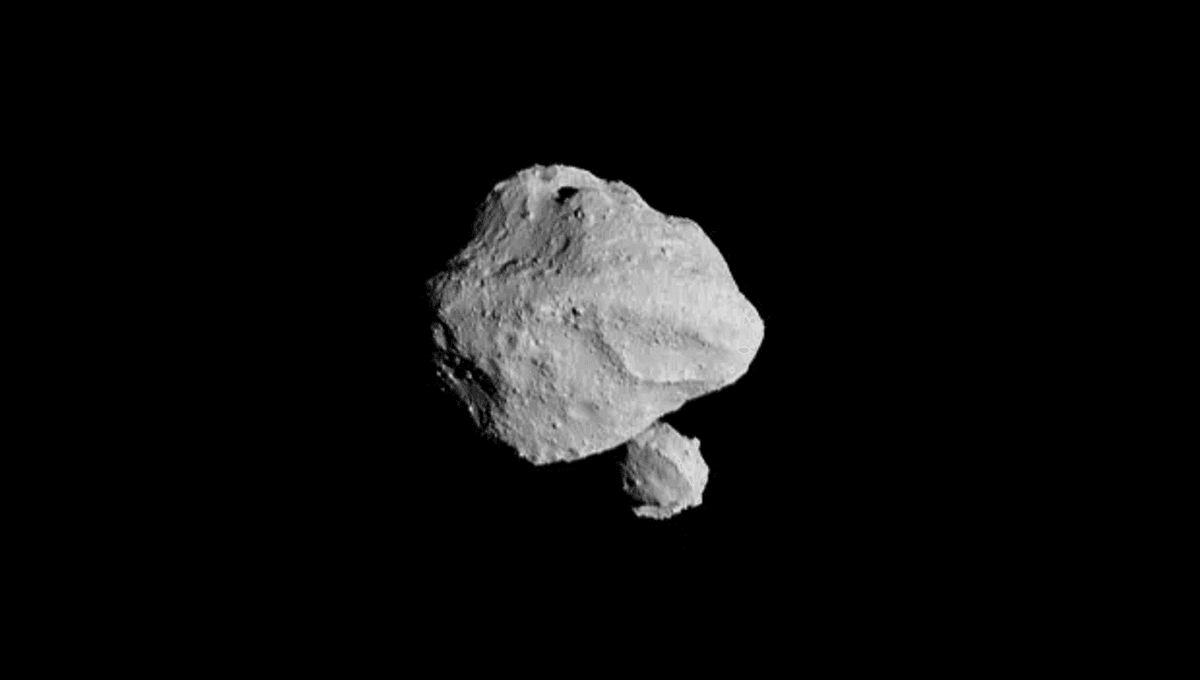
From the get-go, NASA’s Trojan asteroids-bound Lucy was going to be a record breaker. The mission mission is set to study eight different asteroids, the largest number of objects ever for one spacecraft. This week, it carried out a successful flyby of its first asteroid – not its final destination but an interesting stopover – only to find two asteroids for the price of one. Lucy will now study eleven objects in total.
Lucy’s science mission is to find “fossils” of planet formation – asteroids in the main belt and around Jupiter, the so-called Trojans – that will reveal new insight into the early history of the Solar System. The primitive Trojans are expected to have experienced fewer collisions than asteroids in the main belt, and so may act as “time capsules” to that early formation.
Dinkinesh was not considered a primary target for Lucy as the asteroid is a bit too small but given how close Lucy was passing, the NASA team applied a few course maneuvers to carry out this first flyby and test the tracking capabilities of the spacecraft before putting them to work on its main science targets.
Lucy is named after the unfortunate human ancestor that revolutionized paleontology. In turn, the fossil is named after the Beatles song Lucy in the Sky with Diamonds. Dinkinesh, which is the Ethiopian name for the Lucy fossil, translates to “you are marvelous”, and after seeing the newly released images of the binary pair, clearly, there has never been a more apt name.
“We knew this was going to be the smallest main belt asteroid ever seen up close,” Keith Noll, Lucy project scientist from NASA’s Goddard Space Flight Center, said in a statement. “The fact that it is two makes it even more exciting. In some ways, these asteroids look similar to the near-Earth asteroid binary Didymos and Dimorphos that DART saw, but there are some really interesting differences that we will be investigating.”
A preliminary analysis of the images suggests the larger main body of the pair is around 0.79 kilometers (0.5 miles) across at its widest, while the smaller is 250 meters (820 feet) across. More data is still coming in from Lucy, but the team can tell that the system worked perfectly – even with the curveball that the asteroid was actually two.
“This is an awesome series of images. They indicate that the terminal tracking system worked as intended, even when the universe presented us with a more difficult target than we expected,” said Tom Kennedy, guidance and navigation engineer at Lockheed Martin. “It’s one thing to simulate, test, and practice. It’s another thing entirely to see it actually happen.”
Lucy’s next close encounter will again be in the main asteroid belt. The spacecraft is meeting asteroid Donaldjohanson in 2025. Lucy will fly outward towards its main targets, the Jupiter Trojan asteroids, starting in 2027.
Source Link: NASA’s Lucy Flew Past Its First Asteroid This Week – But Instead Found Two